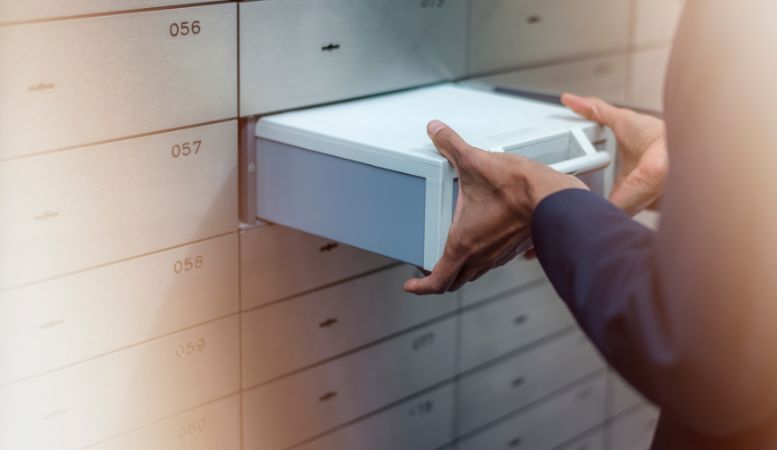Table of Contents
Saving for your future is imperative, especially in today’s uncertain economy. Many people realize that a diverse portfolio containing a variety of assets, including stocks, cash savings, and real estate, will be crucial for financing their retirement. While that is certainly true in principle, investors may forget that investing in gold and other precious metals is another helpful tactic when planning for retirement.
Most workers will have a traditional individual retirement account that can bulk up savings for retirement. They don’t always realize that it’s possible to roll over the value of this account into a gold IRA, making this option well worth your consideration. That doesn’t mean it’s for everyone, however, so it’s important to be informed, do your research, and be honest about your goals.
This informative gold IRA rollover guide will explain all the important details you need to know before making any changes to your retirement account. We’ll uncover what the process entails and how it can benefit you. Discover helpful information to boost your retirement savings, and contact the specialists at Oxford Gold Group if you’d like to learn more about gold IRAs.
Understanding Traditional IRAs and Their Limitations
Before we dive into the nitty gritty of this gold IRA rollover guide, let’s first explain how traditional IRAs work. This retirement account differs slightly from a 401(k) account that many workers contribute to via their employer. An IRA is available not only for employees of large corporations but also for the self-employed and those who work gig jobs like on-demand food delivery or rideshare drivers.
The amount you invest in a traditional IRA can go toward several financial products. You may grow your IRA by investing in stocks, bonds, mutual funds, or exchange-traded funds. One of the biggest advantages of a traditional IRA is that the amount you contribute each year is tax-deductible.
Much like a 401(k), there are contribution limits with a traditional IRA. The Internal Revenue Service lists the current contribution limit as $6,500 annually, while those aged 50 and older can contribute up to $7,500 annually. If you want to give yourself an extra boost when planning for retirement, the limits of a traditional IRA may not help you reach your financial goals.
You won’t be penalized for taking money from your IRA before retirement. However, the IRS will incur a 10% tax on the amount you take out if you are under 59 and a half. This tax applies to any investor under the age requirement, regardless of financial hardships or life challenges.
Exploring the Benefits of a Gold IRA

This gold IRA rollover guide is important for anyone considering investing in precious metals rather than other market-driven assets. Opening a gold IRA comes with immense benefits for investors that boil down to the promise of long-term wealth preservation. While this certainly makes it attractive for certain individuals, don’t let the prospect of dollar signs get in the way of making such a decision without the input of a reliable financial advisor.
Gold is one of the most stable investments available compared to stocks, which face the consequences of market volatility. It is historically proven to survive the turmoil of recessions and inflation, so investors don’t suffer huge financial losses. Price fluctuations may occur, but gold is generally a favorable investment for long-term wealth. Its steady growth in value makes it one of the most popular ways individuals can diversify their portfolios.
Investment experts note that gold is one of the most tangible assets people can have in their name. Its value makes it worth holding on to for decades, whereas stocks, funds, and other investments are not as reliable in the long term. Investors with a gold IRA also see various benefits regarding their taxes, which we will explain in more detail below.
A standard gold IRA is funded with pre-tax dollars, so you’ll never pay taxes on any contributions you make. You’ll only pay tax when you withdraw from the account. At this time, you’ll be taxed according to your current income. Cashing in on your gold IRA during retirement, ideally when you have a lower income, means you’ll pay less in taxes. A Roth gold IRA works by taxing your contributions, though withdrawals are not taxed.
Evaluating the Potential Pitfalls of a Gold IRA Rollover
Despite the many benefits of a gold IRA, you should consider a few risks, especially when rolling over your assets from a traditional IRA or 401(k). This gold IRA rollover guide explains tactics that will help you avoid the following pitfalls of this investment strategy.
The first risk of a gold IRA rollover is that this retirement account does not pay any earnings or dividends. Unlike stock and fund investments, these annual earnings are not included in a gold IRA. Dividends and stock earnings will help you build wealth without making any additional investments. By investing in a gold IRA, you could miss out on this slight bump in account value.
Another issue you should be aware of before rolling over a standard retirement account into a gold IRA is the necessary fees. You’ll need a company specializing in precious metal investments to serve as the custodian of your gold IRA. This institution will help manage and store your physical gold assets.
You’ll likely need to pay fees to this custodian in exchange for them storing and protecting your assets. Allocating a certain amount in custodian fees can be a drawback for anyone new to investing in gold. However, this payment ensures your investments are secure.
Finally, experts warn investors to consider the amount they wish to contribute. Don’t assume you can contribute more every year by starting the rollover process. Traditional and gold IRAs currently have the same contribution limits: $6,500 each year for anyone under 50 and $7,500 annually for anyone over 50.
Choosing a Trustworthy Gold IRA Custodian
![]()
Every gold IRA rollover guide should encourage investors to find a trustworthy source to serve as their account custodian. This third-party provider helps manage your investments so you can grow your portfolio. Unlike traditional brokers, a gold IRA custodian deals solely with precious metal investments.
Choosing a gold IRA custodian you can trust doesn’t have to be difficult. You need to know your financial goals and let those guide your research. The following tips will help you select a provider that can lead your investments in the right direction.
Accredited Custodian Requirements
The credentials of every potential gold IRA company you research should be the first thing you look at. Only select a provider that meets all industry regulations and holds accreditation from the IRS. While some banks and trust companies can serve as custodians for a precious metal IRA, not every institution is recognized as an accredited custodian.
The IRS keeps a list of approved trustees and custodians who can manage your gold IRA. Check this list as a starting point for your research, then narrow your options based on the following criteria. You’ll have a much easier time continuing the rest of the process in this gold IRA rollover guide when working with an approved custodian.
Reputation and Track Record
Would you go to a doctor for medical care if they weren’t recommended by others in the field? It’s in our nature to want the most reputable, trustworthy people handling what we hold most valuable. Whether choosing a doctor or a gold IRA custodian, you need someone with a good reputation and track record.
Ask around to see whether any loved ones have a gold IRA and inquire about the companies serving as their custodians. Getting personal recommendations from friends or family is one of the best ways to learn about a company’s reputation and hear about its service first-hand. If you don’t know anyone investing in a gold IRA, you can research various investment groups and read their customer reviews to get a sense of their reputation.
Look for a company that offers superior service and transparency with their clients. One way to do this is by looking at complaints with the Better Business Bureau and how the company addresses them. They should be able to protect your precious metal assets and help you sustain or grow your wealth instead of losing value. During your research, ask how a custodian handles IRA rollovers.
The ideal custodian understands everything that occurs in a gold IRA rollover, guides you through the process, and makes it stress-free for you by handling all the steps that need to take place to ensure your peace of mind. Once your gold IRA is set up, they will do everything possible to grow your wealth and prepare you for financial success during retirement.
Storage and Security Measures

A huge part of keeping your investments safe is properly storing them. The ideal gold IRA custodian will have advanced security measures to ensure your assets are in good hands. Many companies that manage precious metal IRAs use depositories to store physical gold safely.
Experts not only tout depositories as the best way to keep your gold safe, but they also stress the legal precedent of this option. A key part of any gold IRA rollover guide is reminding you to work only with custodians who can connect you with reputable depository locations. Custodians usually list depositories they partner with and allow their clients to choose one for their precious metal storage.
Consider the security measures at each location, including 24/7 security cameras monitoring the facility and separate versus integrated storage. Would you like access to your assets at all times? Inquire about the facility’s hours of operation and whether investors can always access their gold. Another crucial component is whether the depository offers insurance on gold items.
Fees and Pricing Transparency
Most gold IRA custodians will charge fees to cover the cost of keeping physical gold assets safe and secure. If they rent a secondary space to hold all of these assets, fees will likely go toward the cost of the space. You may have to pay annual fees for the custodian’s service and storage, so keep this in mind when weighing the rewards of the extra fees this process entails.
Some custodians will also charge a small fee to set up the account and transaction fees that allow you to buy and sell gold. Understanding how much a custodian will charge in excess fees is essential before opening a gold IRA. You want to research different options and choose a trustworthy provider with fair prices. After all, you could work with this company for years and don’t want to waste your money if a better option is available.
Asking important questions about the company’s pricing policies will help you make an informed decision about whether you can trust them with your precious metal assets for the long haul. This includes whether they charge a flat rate for storage and whether they’d be willing to waive a set-up fee. Hammering out these details sooner rather than later will pay its dividends, and any company that isn’t willing to be transparent probably isn’t worth your consideration.
Assessing Your Financial Goals and Risk Tolerance

It’s important to know that a gold IRA is a form of self-directed IRA. This means the account holder is solely responsible for the investments they make. Any professional gold IRA rollover guide will recommend that amateur investors think about their financial goals and risk tolerance before launching a precious metal IRA.
Say you’re 40 years old and planning to retire at 65. You’re looking for a safe-haven investment that will survive periods of market volatility and inflation. Before jumping into the gold IRA rollover process, experts recommend closely examining your goals and the risks involved. You might want to ask yourself the following questions:
- What amount do I need to save before I can retire comfortably?
- What other assets make up my investment portfolio?
- Am I ready for the potential risks involved with investing in gold?
- Am I planning to reach my contribution limit each year for optimum investments?
- Am I happy with my portfolio’s performance over the last five to ten years?
Investing in gold is a great way to preserve long-term wealth, but if you cannot attain financial security during retirement, it might be more beneficial to focus on other investment options with a more sizable return.
Determining the Amount To Roll Over Into a Gold IRA
How much should you take from a traditional IRA or 401(k) and roll into a gold IRA? This question stumps many investors while working with a custodian during the gold IRA rollover process. Every investor will have different goals and wealth, so there is no one-size-fits-all amount that you should move into a gold IRA.
Experts recommend having physical gold investments make up 5% to 10% of your portfolio. This creates enough diversity within your portfolio and allows you to reap the advantages of both high- and low-risk assets. If you have stock investments that underperform during a volatile period, your gold investments should remain steady, so you still have financial stability.
Although most investment professionals use the 5% to 10% range as a broad suggestion, determining the exact amount you should roll over requires careful consideration. The following tips will help determine how much you should invest in a gold IRA.
Assessing Retirement Savings Adequacy
Are you nearing retirement and on track to reach the total savings you need? In this case, a low-risk investment strategy may benefit you more than buying stocks that could underperform. In most gold IRA rollover guides, investment experts suggest that allocating 15% to 20% of your portfolio to precious metals is best for your financial situation.
It’s important to remember that gold is a safe-haven investment. It likely won’t hurt your finances, but neither will it multiply your wealth overnight. Professional gold IRA custodians note that gold is a low-risk investment, so it won’t produce some of the fast rewards that higher-risk investments bring.
In other words, if you’re looking for a fast way to grow your retirement savings, putting most of your assets into a gold IRA won’t result in sudden value increases. Financial planners urge you to map out your retirement plan and manage your savings to reach your goals. Part of this plan may include investing a modest amount in gold while you build your wealth and allocating more of your portfolio to this low-risk investment as you approach retirement age.
Determining your retirement outlook can also help you determine which type of gold IRA is best for you. For example, if you’re close to retirement and don’t plan on contributing to your investments for over a few years, you might open a Roth Gold IRA for limited taxes. A traditional gold IRA may be ideal for those seeking a longer investment period with more contributions than withdrawals since only the withdrawal is taxed.
Evaluating Your Current Investment Portfolio

Examining your investment portfolio is a big part of determining how much you should roll into a gold IRA. Do U.S. and foreign stocks make up the majority of your portfolio? Experts warn that relying only on these high-risk investments can cause your wealth to take a hit if the economy worsens or the market plummets.
Investment professionals recommend diversifying your assets instead of making your portfolio only stocks. The following example breaks down the percentages of a stable, diverse portfolio:
- 55% U.S. bonds
- 30% U.S. and foreign stocks
- 8% gold
- 7% diversified commodities
A financial planner can help you determine the right solution based on market performance and future projections. They will also likely discuss inflation concerns and reveal how a gold IRA rollover guides a percentage of your wealth away from a deteriorating economy. While stocks and other funds aren’t usually immune from hyperinflation, gold tends to serve as an inflation hedge, so your investments see some stability.
Considering Future Financial Goals
Anyone who opens a gold IRA is looking forward to a comfortable retirement. However, deciding the amount you roll over from a traditional IRA or 401(k) depends on your short-term and long-term goals.
Figuring out your long-term goals may include how much you want your portfolio to be worth when you retire. Another long-term goal could be to see a certain percentage of growth in your gold investments over a given period. Mapping these out with an expert can help you plan for those goals that start with your initial investment strategy.
Since a gold IRA is a retirement account, most people only think ahead to retirement when opening one. However, investment professionals emphasize that your short-term goals should receive the same consideration when launching your gold IRA. Striking a balance between the two will set you up for the most financial success.
Say you have $100,000 in high-interest debt that you need to pay off. Paying down your debt is a short-term goal that professionals suggest you focus on first, especially if the interest you accrue is higher than the projected return on investment of a gold IRA. Financial specialists recommend still contributing to your retirement account during this time but allocating less so you can get yourself out of debt sooner.
Understanding the Process of Transferring Funds
Now that you understand more about how gold IRAs work, how to choose a custodian, and how much you should transfer into your account, this gold IRA rollover guide will finally explain the basics of the transfer process. The IRS has a set of rules in place for rolling over assets from a traditional IRA to a gold IRA. Ensure you’re familiar with these rules to avoid any tax penalties.
Transferring funds usually happens in one of three ways:
- Direct rollover: Any distribution from your retirement account can go directly to another IRA. Your plan administrator can handle the process and make the distribution available in a check payable to your new account.
- Transfer between trustees: You can ask the institution that holds your old IRA to send a distribution to another account and have no taxes withheld from your transfer account.
- 60-day rollover: Any distribution paid directly to you can be put into a new IRA within 60 days. You can deposit the entire distribution amount or only a portion of it into the new IRA.
Remember that the IRS has a strict policy allowing you to perform one rollover from an IRA annually. You won’t be able to allocate a portion of your traditional IRA to a gold IRA in March and then roll over more funds in December of that same year.
Researching and Selecting the Right Gold Investments

A key part of any gold IRA rollover guide is discussing the right type of gold investments you should make. Since this is a self-directed IRA, you are solely responsible for choosing your investments. So, which one is best for you?
Let’s uncover some of the rules you must follow when investing in gold, evaluating your investment options, looking at market trends, and more. Researching your potential investments can set you up for more financial success down the road. Savvy investors weigh every detail of the process to ensure they get the most out of their investments.
Types of Gold Investments
Do you have an extensive supply of gold jewelry or collectible coins? Contrary to popular belief, not every gold product is allowed in a precious metals IRA. The IRS places various restrictions on what you can invest in for your best interest.
Research these requirements before purchasing anything from a precious metal dealer. Many popular items, such as U.S. Liberty coins and United Kingdom Sovereign coins, are not allowed as a gold IRA investment. Precious metal objects must meet the following purity standards to be eligible for a gold IRA:
- 0.995 purity grade for physical gold
- 0.999 purity grade for silver
- 0.9995 purity grade for platinum or palladium
These requirements typically prohibit popular gold and silver coins from entering a precious metal IRA since they might have a lower purity grade. If you’re looking for IRS-approved gold bullion and coins, Oxford Gold Group has a range of products for sale that meet all purity standards.
Evaluating Investment Options
As stated earlier in this gold IRA rollover guide, investing in gold is a great way to diversify your portfolio. Your investment options will have some limits based on the IRS purity requirements and your yearly contribution cap. Determine whether you want to reach your contribution limit or invest passively.
You should also consider all the precious metals that are allowed in your IRA. Gold is a popular choice given its steady store of value and performance during times of economic turmoil. However, you don’t need to fill your IRA with just physical gold.
Investing in silver, platinum, and palladium objects will also build wealth over time and give you some wiggle room. These products are worth less per ounce than gold, making them easier to purchase if you can’t allocate the funds to acquire gold immediately.
Filling your IRA with various precious metals makes it possible to preserve your wealth. It also allows you to sell metal objects that aren’t performing as well and put that investment toward gold bars or bullion.
Consideration of Storage Options

You can determine the best place to store your physical gold and precious metal investments with your gold IRA custodian. It may be tempting to store these items at home, particularly if you are a lifelong coin collector and want 24/7 access to your collection. However, the IRS might consider this a form of distribution and tax you on the investment amount.
Work with your custodian to determine a safe depository where your investments will stay. Storing your gold in a facility with constant security surveillance and insurance protection will give you peace of mind that your assets are safe.
Understanding Market Trends
Before purchasing any objects to hold in your gold IRA, professionals urge you to look closely at recent market trends. This relates to the precious metal market, the stock market, and the overall economy. Gold tends to outperform traditional stocks during recessions and holds its status as a safe-haven investment.
If economists predict a downturn, gold prices will likely rise while investors use it as a fallback plan. Regardless of short-term fluctuations, the gold market continues to rise steadily. Data from the past five years shows the price of gold grew from an average of $1,421.37 per ounce in 2019 to $1,933.02 in 2023.
Monitoring and Managing Your Gold IRA Portfolio
After completing all the steps in this gold IRA rollover guide, you can monitor your investment’s progress. Experts recommend proactively managing your investments rather than forgetting about them and hoping you’ll make money.
One way to do this is by regularly checking the markets in real time. You can take this a step further by downloading portfolio management software, which allows you to track your investments. These programs usually let you view your investments as a group or separate them by precious metal.
Monitoring your gold IRA’s performance will help you achieve your financial goals. Keeping a close eye on market trends allows you to discover major changes in the price of gold, silver, and other precious metals.
Make sure you don’t forget to check the IRS regulations annually. Some of their rules, such as the contribution limit, change over time, so keep yourself informed of the latest restrictions. Contact your gold IRA custodian or a certified financial planner for more assistance.
Seeking Professional Guidance for a Smooth Rollover Process
This gold IRA rollover guide has valuable information to help you start the process. If you need additional assistance or want to discuss this topic in greater depth with a gold IRA expert, the Oxford Gold Group is here to help.
Request our free precious metals investment guide to learn the ins and outs of buying and selling gold. You can also call (833) 600-GOLD to connect with a specialist and discuss your options for opening a gold IRA.








